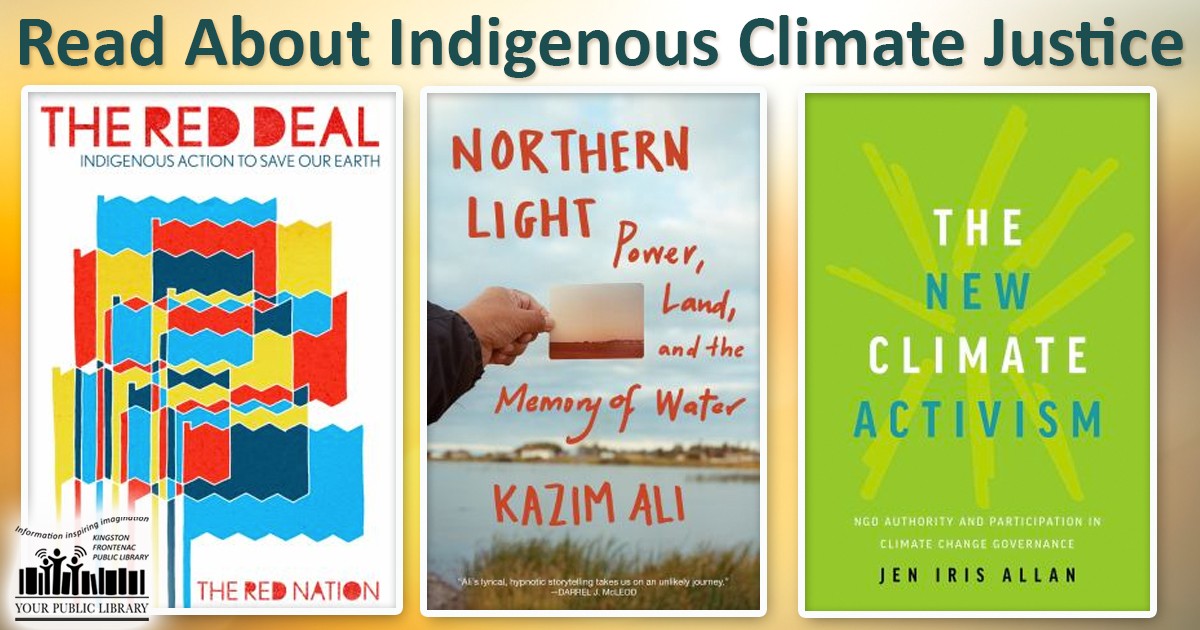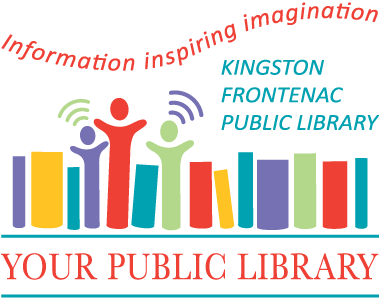
Addressing climate change will take a global effort stemming from diverse bodies of knowledge, cultures, governments and movements. Explore Indigenous perspectives on climate justice through these titles.
Indigenous Peoples and Climate Change by Marla Tomlinson
Indigenous Peoples and Climate Change is part of the series on Canada’s Changing Climate: Problems and Solutions. This series investigates the impact of climate change on Canada’s peoples, place and lifestyle. Indigenous Peoples and Climate Change is by Marla Tomlinson with content consultant Dennis McPherson, band member of Couchiching First Nation, and a professor in the Department of Indigenous Learning at Lakehead University. Grades 4-6.
The Red Deal: Indigenous Action to Save Our Earth by the Red Nation
The Red Deal is a call for action beyond the scope of the US colonial state. It’s a program for Indigenous liberation, life, and land—an affirmation that colonialism and capitalism must be overturned for this planet to be habitable for human and other-than-human relatives to live dignified lives.
Northern Light: Power, Land, and Memory of Water by Kazim Ali
Kazim Ali's earliest memories are of Jenpeg, a temporary town in the forests of northern Manitoba where his immigrant father worked on the construction of a hydroelectric dam. As a child, Ali had no idea that the dam was located on the unceded lands of the Indigenous Pimicikamak, the "people of rivers and lakes." Northern Light recounts Ali's memories of his childhood and his return to Pimicikamak as an adult. During his visit, he searches for the sites of his childhood memories and learns more about the realities of life in Pimicikamak: the environmental and social impact of the Jenpeg dam, the effects of colonialism and cultural erasure, and the community's initiatives to preserve and strengthen their identity.
The New Climate Activism: NGO Authority and Participation in Climate Change Governance by Jen Iris Allan
Through case studies of women's rights, labour, alter-globalization, health, and human rights activism, Allan shows that some activists sought and successfully gained recognition as part of climate change governance, while others remained marginalized. The New Climate Activism explores why and how these activists brought their issues to climate change, and why some succeeded while others did not.
We Are Water Protectors by Carole Lindstrom
We Are Water Protectors issues an urgent rallying cry to safeguard the Earth's water from harm and corruption. Water is the first medicine. It affects and connects us all. When a black snake threatens to destroy the Earth and poison her people's water, one young water protector takes a stand to defend Earth's most sacred resource. Ages 3-6.
What We're Fighting for Now is Each Other: Dispatches From the Front Lines of Climate Justice by Wen Stephenson
In 2010, journalist Wen Stephenson woke up to the true scale and urgency of the catastrophe bearing down on humanity, starting with the poorest and most vulnerable everywhere, and confronted what he calls "the spiritual crisis at the heart of the climate crisis." Inspired by others who refused to retreat into various forms of denial and fatalism, he walked away from his career in mainstream media and became an activist, joining those working to build a transformative movement for climate justice in America.
Climate Justice: Hope, Resilience, and the Fight for a Sustainable Future by Mary Robinson
At the birth of her first grandchild, Robinson's fight for climate change became deeply personal. Her travels led to a heartening revelation: that an irrepressible driving force in the battle for climate justice could be found at the grassroots level, mainly among women, many of them mothers and grandmothers like herself.
More Powerful Together: Conversations with Climate Activists and Indigenous Land Defenders by Jen Gobby
Gobby has been actively involved with climate justice, anti-pipeline, and Indigenous land defense movements in Canada for many years. As a researcher, she has sat down with folks from these movements and asked them to reflect on their experiences with movement building. Indigenous scholarship, ecological principles, and activist reflections all converge on the insight that the means and ends of radical transformation is in forging relationships of equality and reciprocity with each other and with the land.
Nibi's Water Song by Sunshine Tenasco
Nibi is the Anishinaabemowin word for water. In Nibi's Water Song, an Indigenous girl on the search for clean water to drink. Though she is faced with repeated obstacles, Nibi's joyful and determined energy becomes a catalyst for change and action as her community, and then in widening circles the country and government, rally around her to make clean drinking water available for all. Ages 4-8.
The Nature of Canada by Colin MacMillan Coates
The Nature of Canada will make you think differently not only about Canada and its past but quite possibly about Canada and its future. Its insights are just what we need as Canada attempts to reconcile the opposing goals of prosperity and preservation. The Nature of Canada will appeal to anyone interested in Canadian history, national identity, and the future of the Canadian environment.
Lighting the Eighth Fire: The Liberation, Resurgence, and Protection of Indigenous Nations by Leanne Simpson
This remarkable collection of essays by leading Indigenous scholars focuses on the themes of freedom, liberation and Indigenous resurgence as they relate to the land. Editor Leanne Simpson (Nishnaabekwe) has solicited Indigenous writers that place Indigenous freedom as their highest political goal, while turning to the knowledge, traditions, and culture of specific Indigenous nations to achieve that goal.
There's Something in the Water: Environmental Racism in Indigenous and Black Communities by Ingrid Waldron
In There's Something In The Water, Ingrid R. G. Waldron examines the legacy of environmental racism and its health impacts in Indigenous and Black communities in Canada, using Nova Scotia as a case study, and the grassroots resistance activities by Indigenous and Black communities against the pollution and poisoning of their communities.
Resurgence and Reconciliation: Indigenous-Settler Relations and Earth Teachings by Michael Asch
By using "earth-teachings" to inform social practices, the editors and contributors offer a rich, innovative, and holistic way forward in response to the world's most profound natural and social challenges. This timely volume shows how the complexities and interconnections of resurgence and reconciliation and the living earth are often overlooked in contemporary discourse and debate.
Dammed: The Politics of Loss and Survival in Anishinaabe Territory by Brittany Luby
Dammed: The Politics of Loss and Survival in Anishinaabe Territory explores Canada's hydroelectric boom in the Lake of the Woods area. It complicates narratives of increasing affluence in postwar Canada, revealing that the inverse was true for Indigenous communities along the Winnipeg River. Dammed makes clear that hydroelectric generating stations were designed to serve settler populations. Governments and developers excluded the Anishinabeg from planning and operations and failed to consider how power production might influence the health and economy of their communities. By so doing, Canada and Ontario thwarted a futurethat aligned with the terms of treaty, a future in which both settlers and the Anishinabeg might thrive in shared territories.
Red Earth, White Lies: Native Americans and the Myth of Scientific Fact by Vine Deloria
Vine Deloria, Jr. addresses the conflict between mainstream scientific theory about our world and the ancestral worldview of Native Americans. Claiming that science has created a largely fictional scenario for American Indians in prehistoric North America, Deloria offers an alternative view of the continent's history as seen through the eyes and memories of Native Americans.


















.png)


